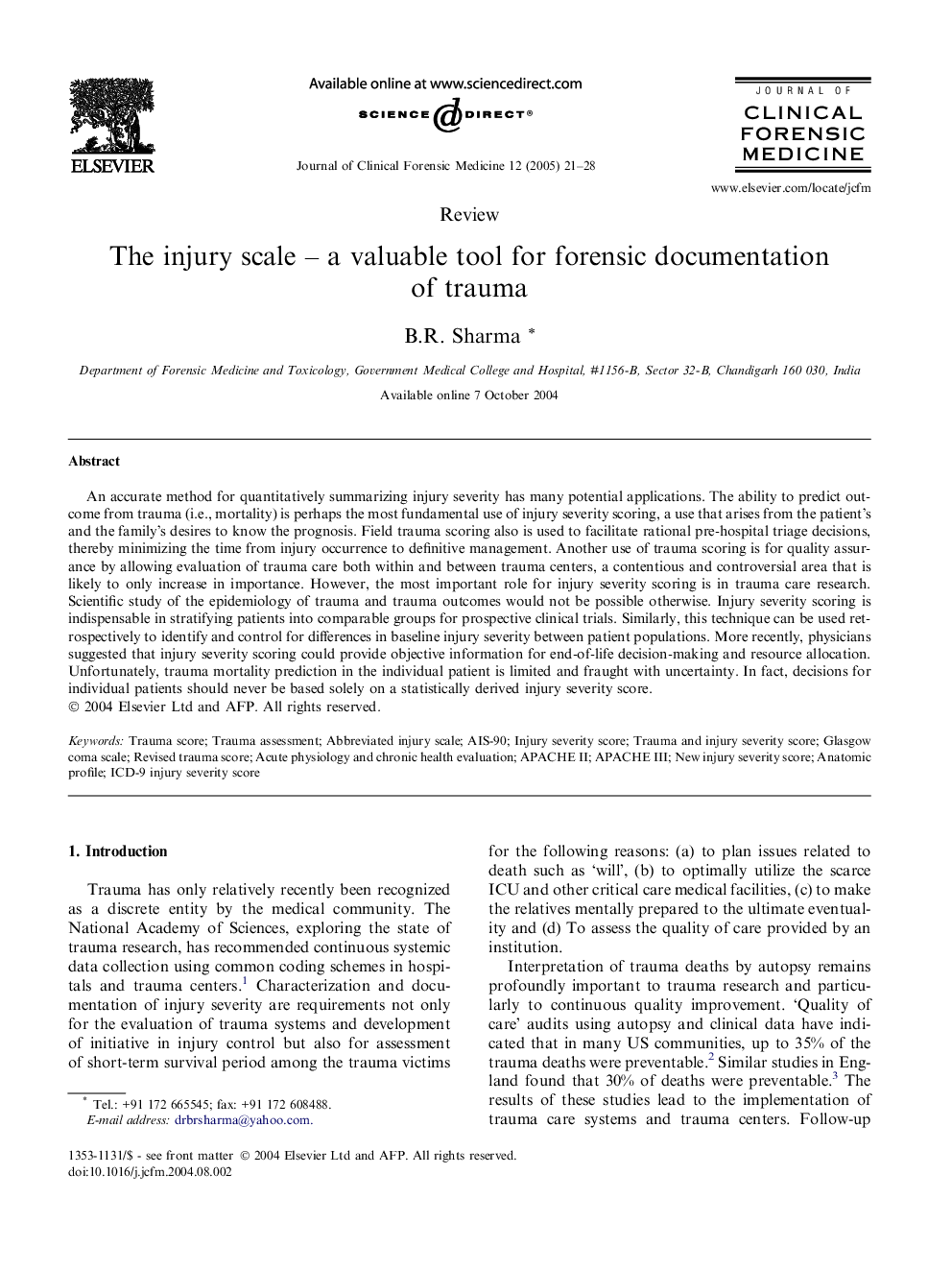| کد مقاله | کد نشریه | سال انتشار | مقاله انگلیسی | نسخه تمام متن |
|---|---|---|---|---|
| 10254311 | 161235 | 2005 | 8 صفحه PDF | دانلود رایگان |
عنوان انگلیسی مقاله ISI
The injury scale - a valuable tool for forensic documentation of trauma
دانلود مقاله + سفارش ترجمه
دانلود مقاله ISI انگلیسی
رایگان برای ایرانیان
کلمات کلیدی
APACHE IIAPACHE IIITrauma assessment - ارزیابی تروماRevised Trauma Score - امتیاز ترومای تجدید نظر شدهTrauma and Injury Severity Score - تروما و میزان شدت آسیبAcute Physiology and Chronic Health Evaluation - فیزیولوژی حسی و ارزیابی سلامت مزمنAbbreviated Injury Scale - مقیاس ضریب همبستگیGlasgow coma scale - مقیاس کما گلاسکوTrauma score - نمره تروماInjury severity score - نمره شدت آسیبNew Injury Severity Score - نمره شدت عصبانیت جدید
موضوعات مرتبط
علوم زیستی و بیوفناوری
بیوشیمی، ژنتیک و زیست شناسی مولکولی
ژنتیک
پیش نمایش صفحه اول مقاله

چکیده انگلیسی
An accurate method for quantitatively summarizing injury severity has many potential applications. The ability to predict outcome from trauma (i.e., mortality) is perhaps the most fundamental use of injury severity scoring, a use that arises from the patient's and the family's desires to know the prognosis. Field trauma scoring also is used to facilitate rational pre-hospital triage decisions, thereby minimizing the time from injury occurrence to definitive management. Another use of trauma scoring is for quality assurance by allowing evaluation of trauma care both within and between trauma centers, a contentious and controversial area that is likely to only increase in importance. However, the most important role for injury severity scoring is in trauma care research. Scientific study of the epidemiology of trauma and trauma outcomes would not be possible otherwise. Injury severity scoring is indispensable in stratifying patients into comparable groups for prospective clinical trials. Similarly, this technique can be used retrospectively to identify and control for differences in baseline injury severity between patient populations. More recently, physicians suggested that injury severity scoring could provide objective information for end-of-life decision-making and resource allocation. Unfortunately, trauma mortality prediction in the individual patient is limited and fraught with uncertainty. In fact, decisions for individual patients should never be based solely on a statistically derived injury severity score.
ناشر
Database: Elsevier - ScienceDirect (ساینس دایرکت)
Journal: Journal of Clinical Forensic Medicine - Volume 12, Issue 1, February 2005, Pages 21-28
Journal: Journal of Clinical Forensic Medicine - Volume 12, Issue 1, February 2005, Pages 21-28
نویسندگان
B.R. Sharma,